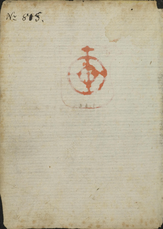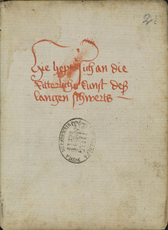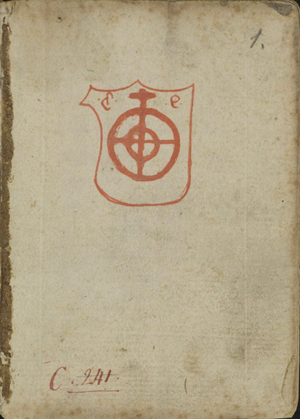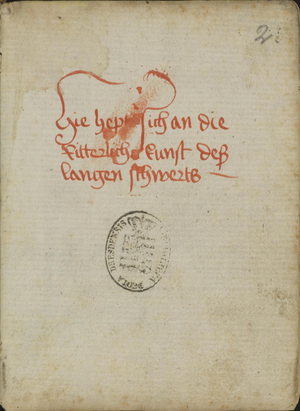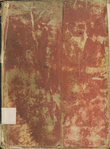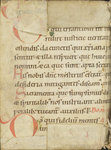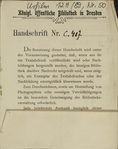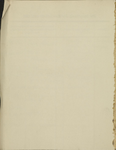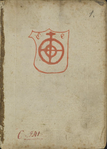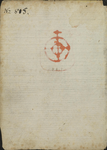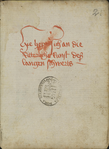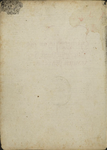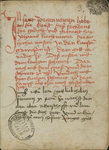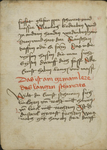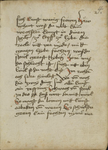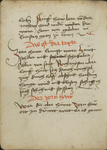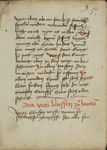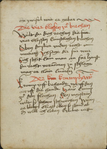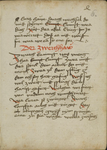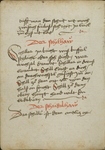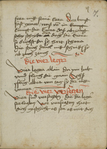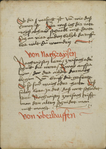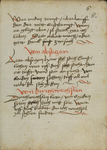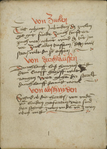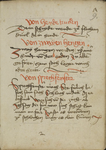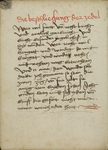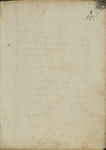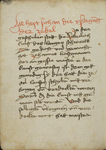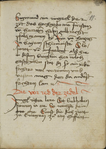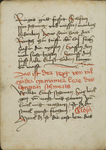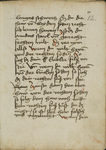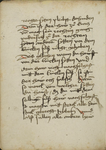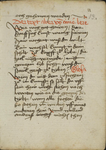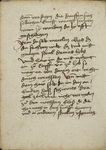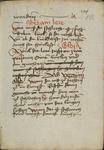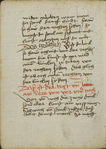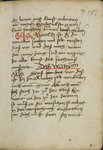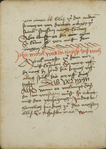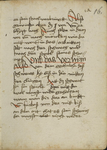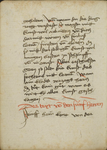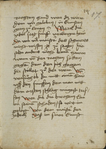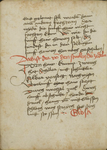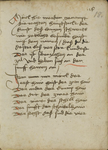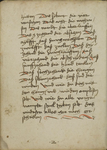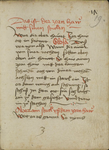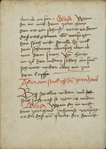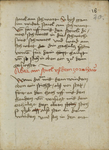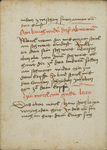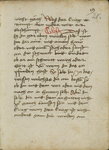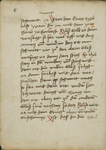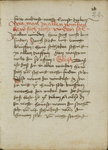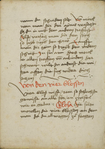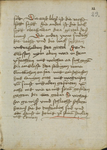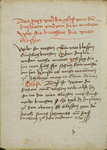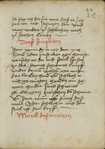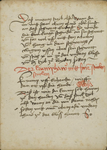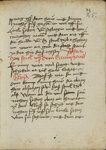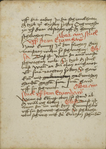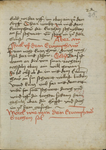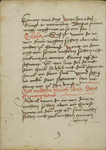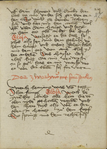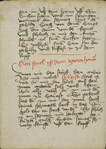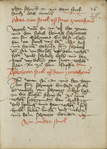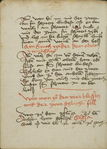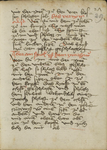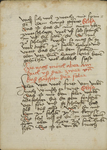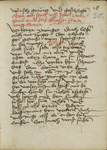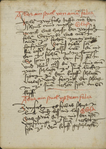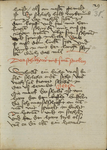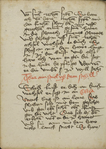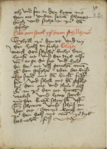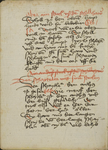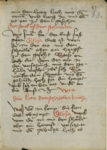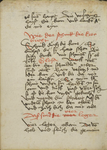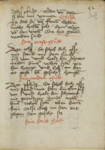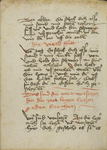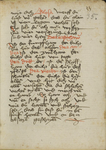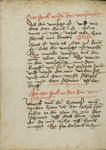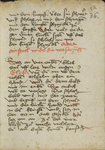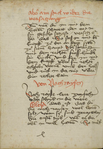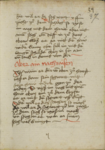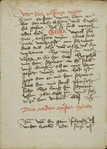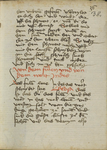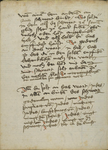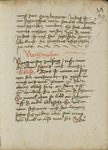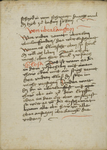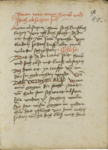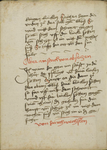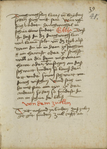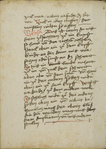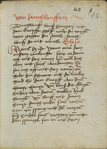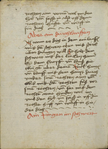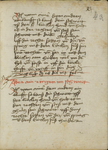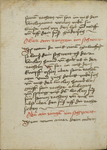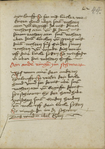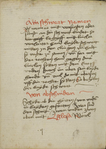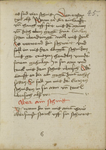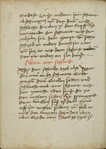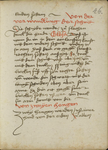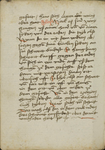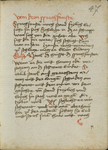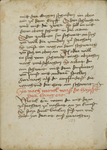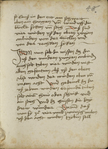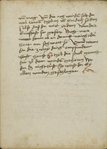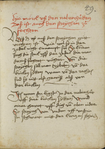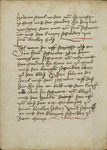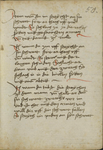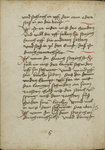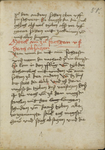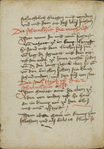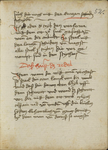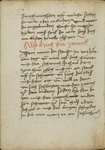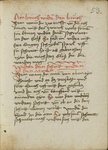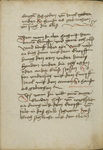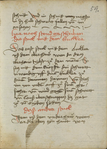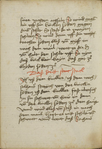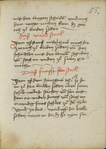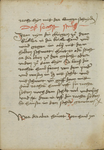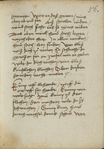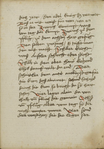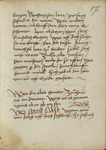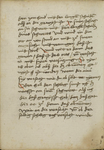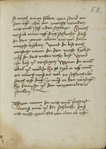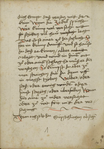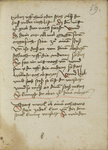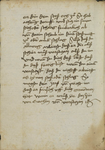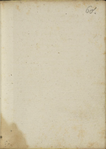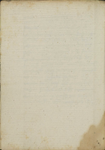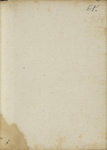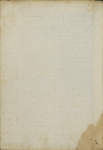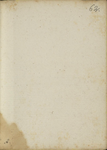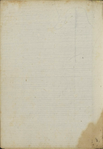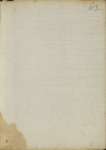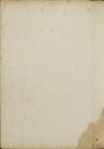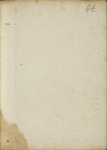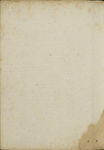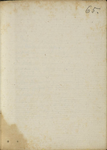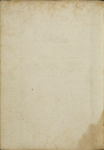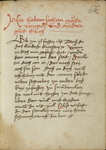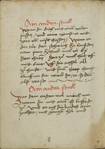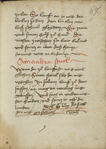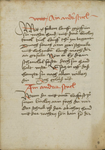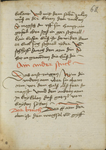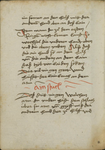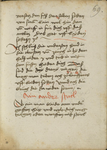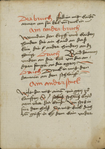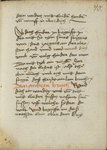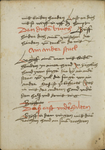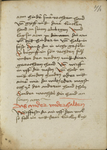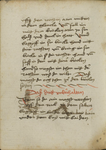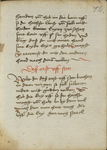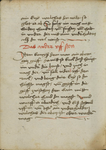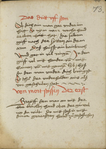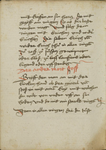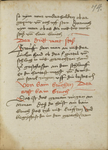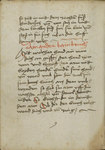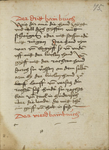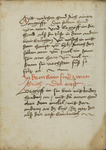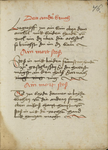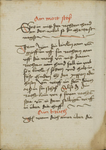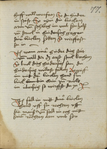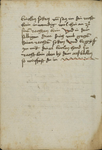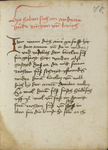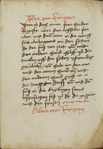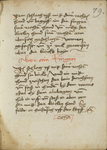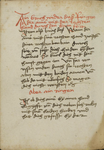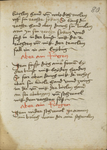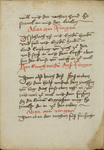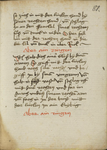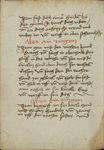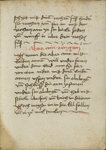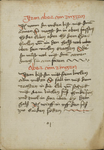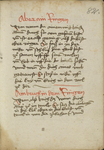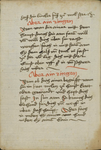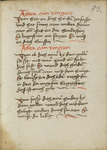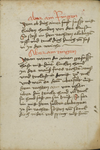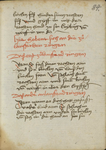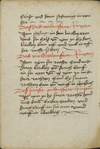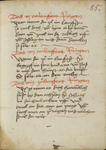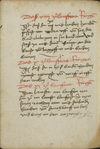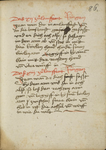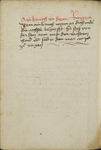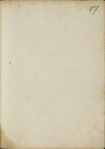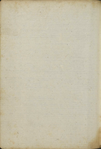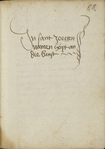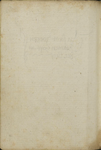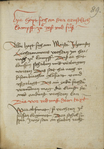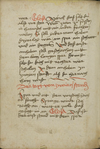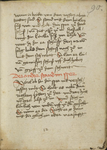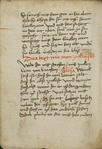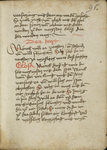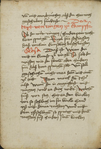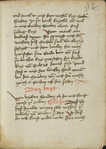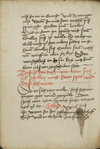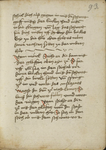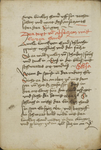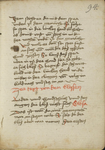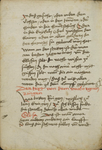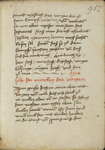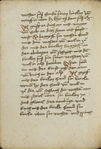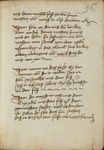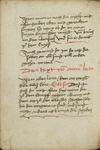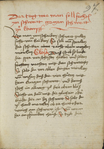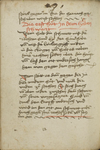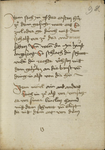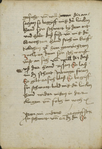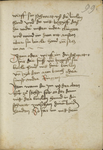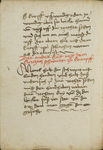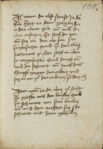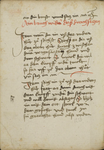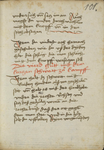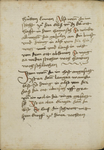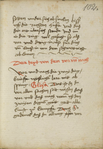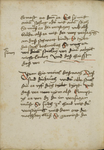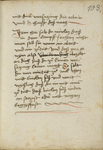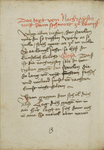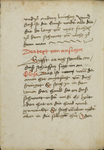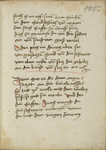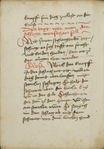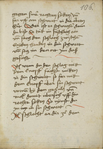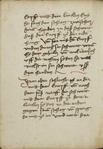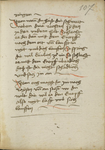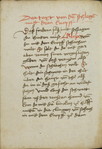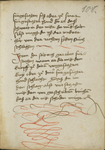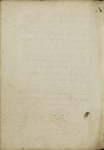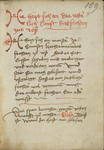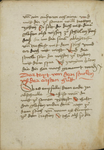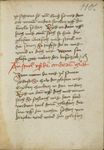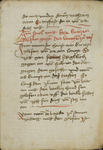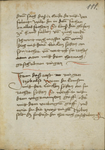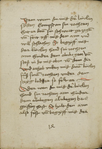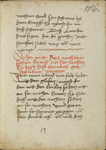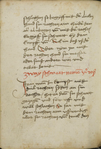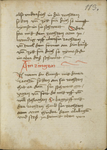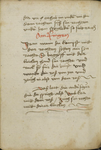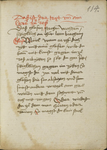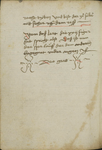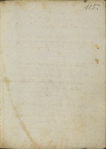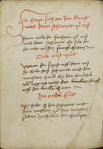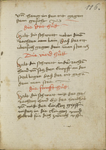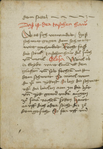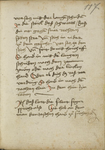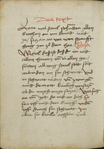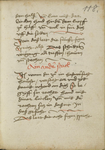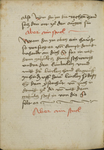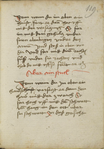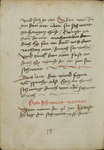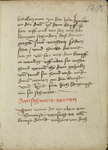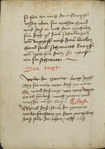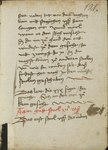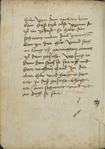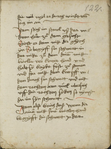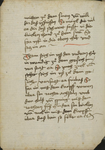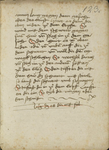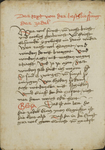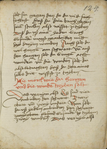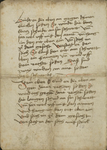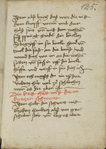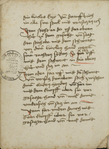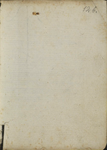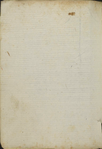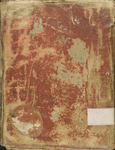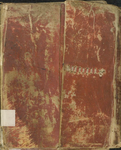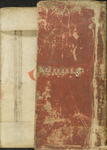|
|
You are not currently logged in. Are you accessing the unsecure (http) portal? Click here to switch to the secure portal. |
Difference between revisions of "Johan Liechtnawers Fechtbuch geschriebenn (MS Dresd.C.487)"
| Line 133: | Line 133: | ||
|- | |- | ||
| <small>28</small> | | <small>28</small> | ||
| − | | If he becomes aware of it,<br/> Take off above without fear. | + | | If he becomes aware of it,<br/> Take it off above without fear. |
|} | |} | ||
| − | <p>Understand this | + | <p>Understand it like this: When one strikes at you from-the-roof, strike the wrath-hew with the long edge, when he is certain to you, into his strike, upon his sword with the long edge of you sword and with this, from that moment on, wind your point into his face with command, that is with strength.</p><section end="wrath-1"/> |
| | | | ||
{{section|Page:MS Dresd.C.487 057r.png|2|lbl=57r|p=1}} {{section|Page:MS Dresd.C.487 057v.png|1|lbl=57v|p=1}} | {{section|Page:MS Dresd.C.487 057r.png|2|lbl=57r|p=1}} {{section|Page:MS Dresd.C.487 057v.png|1|lbl=57v|p=1}} | ||
|- | |- | ||
| − | | <section begin="wrath-2"/><p>And if he becomes aware of it | + | | <section begin="wrath-2"/><p>And if he becomes aware of it (that is, of the point) and parries with a free displacement, then take it off above as the taking off has become sure to you. When someone parries you freely, how you shall take off. Or otherwise deliver the strike the closest as possible on his sword, as I have made clear to you. This gets you to it sooner than taking off however he parries you (on account of the same strike will also parry), then at that moment upon that make that strike or a perpetual winding with a thrust or strike.</p><section end="wrath-2"/> |
| | | | ||
{{section|Page:MS Dresd.C.487 057v.png|2|lbl=-|p=1}} {{section|Page:MS Dresd.C.487 058r.png|1|lbl=58r|p=1}} | {{section|Page:MS Dresd.C.487 057v.png|2|lbl=-|p=1}} {{section|Page:MS Dresd.C.487 058r.png|1|lbl=58r|p=1}} | ||
|- | |- | ||
| − | | <section begin="wrath-3"/><p>Also if someone strikes | + | | <section begin="wrath-3"/><p>Also know, if someone strikes at you, that you may quite certainly drive the wrath-point therein alone and you have also parried (when you drive it correctly as you are taught it) and is evil to parry when you desire one harm. So drive it upon someone (he makes whatever he wishes, a strike or stab), so he must parry it. Thus you come to the previously depicted plays.</p><section end="wrath-3"/> |
| {{section|Page:MS Dresd.C.487 058r.png|2|lbl=-}}<!-- | | {{section|Page:MS Dresd.C.487 058r.png|2|lbl=-}}<!-- | ||
--><section end="Zornhaw"/><section begin="Krumphaw"/> | --><section end="Zornhaw"/><section begin="Krumphaw"/> | ||
|- | |- | ||
| − | | <section begin="crooked-1"/><p>Item. When you fence | + | | <section begin="crooked-1"/><p>Item. When you fence someone, whatever they strike at you that does not come upon you right directly from above, parry that with the crooked-[hew]. When the recital says: Whoever parries crooked well, disrupts many hews with stepping.<ref>matches folz's text</ref> This is so if someone strikes at you, then drive upon that crooked and so you hew that coming before. Work the fool and wind your point into him or a strike so he must parry. Thus, you again come to more strking that you may then drive upon him: The failer or thrust or endlessly wind or otherwise strike or fall-over when someone parries too low or drives to wide with the parrying.</p><section end="crooked-1"/> |
| | | | ||
{{section|Page:MS Dresd.C.487 058r.png|3|lbl=-|p=1}} {{section|Page:MS Dresd.C.487 058v.png|1|lbl=58v|p=1}} | {{section|Page:MS Dresd.C.487 058r.png|3|lbl=-|p=1}} {{section|Page:MS Dresd.C.487 058v.png|1|lbl=58v|p=1}} | ||
|- | |- | ||
| − | | <section begin="crooked-2"/><p>Item. You shall also | + | | <section begin="crooked-2"/><p>Item. You shall also drive handsome offsettings upon hews or thrusts as you are taught it such that you do not drive after it too coarsely and that your point always stands towards his face in a thrust and if it is that he strikes to the other side from your offsetting, then do not drive-after him. Wind as if you will offset to the other side and thrust. If you are parried and if he must free your thrust, then you again come to your work.</p><section end="crooked-2"/> |
| | | | ||
{{section|Page:MS Dresd.C.487 058v.png|2|lbl=-|p=1}} {{section|Page:MS Dresd.C.487 059r.png|1|lbl=59r|p=1}} | {{section|Page:MS Dresd.C.487 058v.png|2|lbl=-|p=1}} {{section|Page:MS Dresd.C.487 059r.png|1|lbl=59r|p=1}} | ||
|- | |- | ||
| − | | <section begin="crooked-3"/><p>Item. Note if someone knows something of the recital and parries your play crooked | + | | <section begin="crooked-3"/><p>Item. Note if someone also knows something of the recital and parries your play crooked. If he then also winds in the thrust at you, then have respect for that and offset his thrust or strike neatly and slide in your thrust or a strike therein as well like this so that you always work so that he must parry you as quickly as you do him. And when you have trained yourself for this so that you are polished with this when you parry someone, that you work nothing but a thrust or strike to it. Thus you may disrupt<ref>irren: disturb, upset, to err, to miss</ref> and break that which he had taken forward against you because that he must certainly<ref> possibly 'continually'</ref> break and parry your before.</p><section end="crooked-3"/> |
| | | | ||
{{section|Page:MS Dresd.C.487 059r.png|2|lbl=-|p=1}} {{section|Page:MS Dresd.C.487 059v.png|1|lbl=59v|p=1}} | {{section|Page:MS Dresd.C.487 059r.png|2|lbl=-|p=1}} {{section|Page:MS Dresd.C.487 059v.png|1|lbl=59v|p=1}} | ||
Revision as of 14:36, 16 November 2017
| Johan Liechtnawers Fechtbuch geschriebenn | |||||
|---|---|---|---|---|---|
| MS Dresd.C.487, Sächsische Landesbibliothek Dresden, Germany | |||||
| |||||
| |||||
| Type | |||||
| Date | 1504-1519 (?) | ||||
| Language(s) | Early New High German | ||||
| Author(s) | |||||
| Compiler | Unknown | ||||
| Material | Paper | ||||
| Size | 126 folia | ||||
| Format | Double-sided, with black and red ink | ||||
| Script | Bastarda | ||||
| External data | Library catalog entry | ||||
| Treatise scans |
| ||||
Johan Liechtnawers Fechtbuch geschriebenn ("Johannes Liechtenauer's Written Fencing Book"; MS Dresden C 487) is a German fencing manual created between 1504 and 1519.[1] The original currently rests in the holdings of the Sächsische Landesbibliothek in Dresden, Germany. This manuscript is often wrongly attributed to Sigmund ain Ringeck, but although his gloss of Johannes Liechtenauer's Record forms a significant portion of the text, he is referred to in the third person in its introduction and was most likely not responsible for the manuscript itself. The rest of the manuscript consists of an assortment of treatises by several different masters who stood in the tradition of Johannes Liechtenauer, though unlike most such manuscripts, none of the individual treatises have attributions apart from Ringeck's.
Dating this manuscript has been problematic in the past, as writers have generally assumed that it was an autograph or archetype prepared for Ringeck himself and used assumptions about his life as a starting point.[2] Thus, in 1956 Martin Wierschin dated the manuscript to the first half of the 15th century and noted that it might date to as early as the late 14th century, based on the assumptions that it was a copy of the MS 3227a and that Ringeck was a direct student of Liechtenauer in the mid-late 14th century.[3] In 1985, Hans-Peter Hils postulated a date between 1438 and 1452, based on identifying the dedicatee with Albrecht III of Bavaria and assuming it was the source for the Cod. 44.A.8.[4] However, while the original text of Ringeck's gloss may indeed date to the 15th century, in 2010 Werner J. Hoffmann arrived at the currently-accepted and much later date of this manuscript through watermark analysis.[1]
Contents
Provenance
The known provenance of the MS Dresden C.487 is:
- Created in Swabia or Bavaria using paper made between 1504 and 1519.[1]
- before 1755 – acquired by the Sächsische Landesbibliothek in Dresden, Germany.[5]
- 1755-present – held by the Sächsische Landesbibliothek.
Contents
| 1r - 2v |
| ||||||||||||||||||||||||||||||||||||||||||||||||||||||||||||||||||||||||||||||||||||||||||||||
|---|---|---|---|---|---|---|---|---|---|---|---|---|---|---|---|---|---|---|---|---|---|---|---|---|---|---|---|---|---|---|---|---|---|---|---|---|---|---|---|---|---|---|---|---|---|---|---|---|---|---|---|---|---|---|---|---|---|---|---|---|---|---|---|---|---|---|---|---|---|---|---|---|---|---|---|---|---|---|---|---|---|---|---|---|---|---|---|---|---|---|---|---|---|---|---|
| 3r - 9v | Recital on long sword fencing by Johannes Liechtenauer | ||||||||||||||||||||||||||||||||||||||||||||||||||||||||||||||||||||||||||||||||||||||||||||||
| 10v - 48v | Gloss of Liechtenauer's Recital on long sword fencing by Sigmund ain Ringeck | ||||||||||||||||||||||||||||||||||||||||||||||||||||||||||||||||||||||||||||||||||||||||||||||
| 49r - 54r | Long sword fencing by Sigmund ain Ringeck | ||||||||||||||||||||||||||||||||||||||||||||||||||||||||||||||||||||||||||||||||||||||||||||||
| 54r - 55v | Sword and Buckler by Andre Liegniczer | ||||||||||||||||||||||||||||||||||||||||||||||||||||||||||||||||||||||||||||||||||||||||||||||
| 55v - 57r | Recital on long sword fencing by Johannes Liechtenauer (fragment) | ||||||||||||||||||||||||||||||||||||||||||||||||||||||||||||||||||||||||||||||||||||||||||||||
| 57r - 59v |
| ||||||||||||||||||||||||||||||||||||||||||||||||||||||||||||||||||||||||||||||||||||||||||||||
| 66r - 77v |
| ||||||||||||||||||||||||||||||||||||||||||||||||||||||||||||||||||||||||||||||||||||||||||||||
| 78r - 84r | Grappling by Ott Jud (fragment) | ||||||||||||||||||||||||||||||||||||||||||||||||||||||||||||||||||||||||||||||||||||||||||||||
| 84r - 86v |
| ||||||||||||||||||||||||||||||||||||||||||||||||||||||||||||||||||||||||||||||||||||||||||||||
| 88r - 108r | Gloss of Liechtenauer's Recital on short sword fencing by Sigmund ain Ringeck | ||||||||||||||||||||||||||||||||||||||||||||||||||||||||||||||||||||||||||||||||||||||||||||||
| 109r - 121v | Gloss of Liechtenauer's Recital on mounted fencing by Sigmund ain Ringeck (fragment) | ||||||||||||||||||||||||||||||||||||||||||||||||||||||||||||||||||||||||||||||||||||||||||||||
| 122r - 125v | Four displaced pages |
Gallery
Additional Resources
- Dürer, Albrecht and Wassmannsdorff, Karl. Die Ringkunst des deutschen Mittelalters. Liepzig: Priber, 1870.
- Jaquet, Daniel; Walczak, Bartłomiej. "Liegnitzer, Hundsfeld or Lew? The question of authorship of popular Medieval fighting teachings". Acta Periodica Duellatorum 2(1): 105-148. 2014. doi:10.1515/apd-2015-0015.
- Lindholm, David and Svard, Peter. Sigmund Ringeck's Knightly Art of the Longsword. Boulder, CO: Paladin Press, 2003. ISBN 978-1-58160-410-8
- Lindholm, David and Svard, Peter. Sigmund Ringeck's Knightly Arts of Combat. Boulder, CO: Paladin Press, 2006. ISBN 978-1-58160-499-3
- Tobler, Christian Henry. Secrets of German Medieval Swordsmanship. Highland Village, TX: Chivalry Bookshelf, 2001. ISBN 1-891448-07-2
- Wierschin, Martin. Meister Johann Liechtenauers Kunst des Fechtens. München: Beck, 1965.
References
- ↑ 1.0 1.1 1.2 Werner J. Hoffmann. "Mscr.Dresd.C.487. Siegmund am Ringeck, Fechtlehre." Die deutschsprachigen mittelalterlichen Handschriften der Sächsischen Landesbibliothek - Staats- und Universitätsbibliothek (SLUB) Dresden. Vorläufige Beschreibungen. August, 2010. Retrieved 3 April 2015.
- ↑ See also Christian Henry Tobler. "Chicken and Eggs: Which Master Came First?" In Saint George's Name: An Anthology of Medieval German Fighting Arts. Wheaton, IL: Freelance Academy Press, 2010.
- ↑ Wierschin 12-13.
- ↑ Hils 54-57.
- ↑ Carl August Scheureck. Catalogus manuscriptorum Bibliothecae Electoralis. [manuscript]. Bibl.Arch.I.B, Vol.132. Dresden, Germany: Sächsische Landesbibliothek, 1755. p 59
- ↑ matches folz's text
- ↑ irren: disturb, upset, to err, to miss
- ↑ possibly 'continually'
- ↑ Corrected from »sinem«.
- ↑ Or I think its more likely that the word treten here is intended to convey kicking.
- ↑ This is a tricky word it could mean illegal breaks, unnatural breaks, or opposing breaks.
- ↑ I assume this means either armoured or armed.
- ↑ Corrected from »am«.
- ↑ An ink stain has made part of the word illegible.
Copyright and License Summary
For further information, including transcription and translation notes, see the discussion page.
| Work | Author(s) | Source | License |
|---|---|---|---|
| Images | Sächsische Landesbibliothek | ||
| Translation | Keith Farrell | Academy of Historical Arts | |
| Translation | Alex and Almirena | Master Sigmund Ringeck | |
| Transcription | Dierk Hagedorn | Index:Johan Liechtnawers Fechtbuch geschriebenn (MS Dresd.C.487) |

